(BM says Early 19thC)
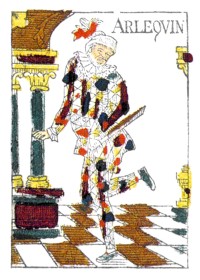





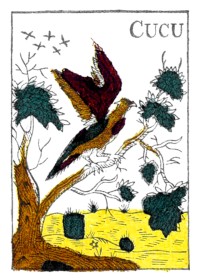





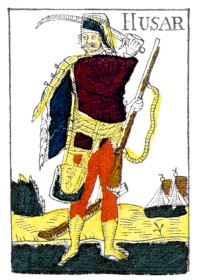





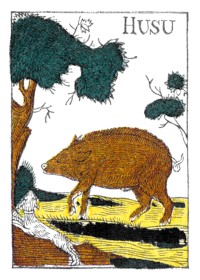





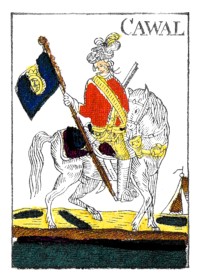





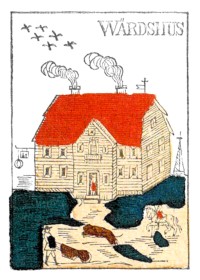













































































.jpg)
.jpg)
.jpg)
.jpg)
.jpg)
.jpg)



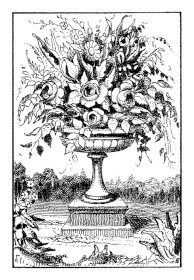


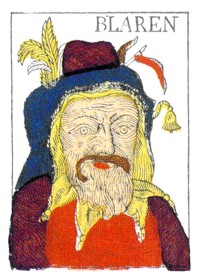





In the Swedish-speaking parts of Finland, the original name of the game remained: Kucku – on the cards normally spelled Cucu, later Kuku. Elsewhere, two other names replaced this, both appearing in a bewildering number of different spellings. From the Italian word Cambio (change, exchange) which is used when the game is first mentioned in Swedish in 1741 comes the variants Campio, Camphio and Camfio, as well as Kamfio etc. with K initially. This reflects that players exchange cards with each other during play. In the Swedish version of the game, more importance is placed on the fool card than in other versions; it can even be considered to outrank the cuckoo. Consequently the game can be called Arleqvin, Arlequin, Harlequin or Harlekin, or more often a shortened form of this: Kille.
| 18th c.? | c. 1850 | 1859 | 1890 (BM says Early 19thC) |
1910 | 20th c.? |
|---|---|---|---|---|---|
 |
 |
 |
 |
 |
 |
 |
 |
 |
 |
 |
 |
 |
 |
 |
 |
 |
 |
 |
 |
 |
 |
 |
 |
 |
 |
 |
 |
 |
 |
 |
 |
 |
 |
 |
 |
 |
 |
 |
 |
 |
 |
 |
 |
 |
 |
 |
 |
 |
 |
 |
 |
 |
 |
 |
 |
 |
 |
 |
 |
 |
 |
 |
 |
 |
 |
 |
 |
 |
 |
 |
 |
 |
 |
 |
 |
 |
 |
 |
 |
 |
 |
 |
 |
 |
 |
 |
 |
 |
 |
 |
 |
 |
 |
 |
 |
 |
 |
 |
 |
 |
 |
 |
 |
 |
 |
 |
 |
.jpg) |
.jpg) |
.jpg) |
.jpg) |
.jpg) |
.jpg) |
 |
 |
 |
 |
 |
 |
 |
 |
 |
 |
 |
 |
Besides the change of Harlekin’s rank, there are several other unique
differences between Kille and other games of the cuckoo family. The
horse has gained a rider, and the name cawal (modern:
kavall) from Italian cavallo which
strictly speaking means horse
, but in a playing-card context
would be understood as a cavalryman. This makes it very similar to dragonen, the dragoon
, in Gnav,
but that card corresponds to the husar, hussar
,
card in Kille. This latter card shows an infantry soldier, even though
hussars are soldiers from light cavalry regiments (dragoons on the other
hand are strictly speaking mounted infantry). The card between these has
uniquely changed from a cat to a boar, called husu.
The treatment of the numeral cards is exceptional. Rather than writing the value in Roman or Arabic numbers, it is expressed by the appropriate number of fleur-de-lis symbols, just like the suit signs of standard French-style playing cards. Extrapolated to zero, this would leave a blank card; but instead of this, the corresponding card contains a wreath, similar to the zero card in some late Italian Cucù decks. That this was understood as a zero and not a subject in itself is suggested by the lack of title for this card in the oldest surviving decks.
Below this is blompottan, the flowerpot
. This
is shown as an ornate vase with a bouquet of flowers, typically placed
outdoors. The corresponding card in Gnav is very similar, though the
name there is potten, the pot
, which alone is
more naturally understood as the chamber pot
, which is the
meaning of the corresponding image in Slabberjan. This similarity
suggests that the development from bucket
to vase
had
already occurred in the Italian prototype. The next card is the only one
that is different in all branches of the cuckoo family. In Kille it is
called blaren, a word of unclear origin; it might have
meant the fool
and could be based wholly or partially on Cucù’s
matto as much as its mascherone
card.